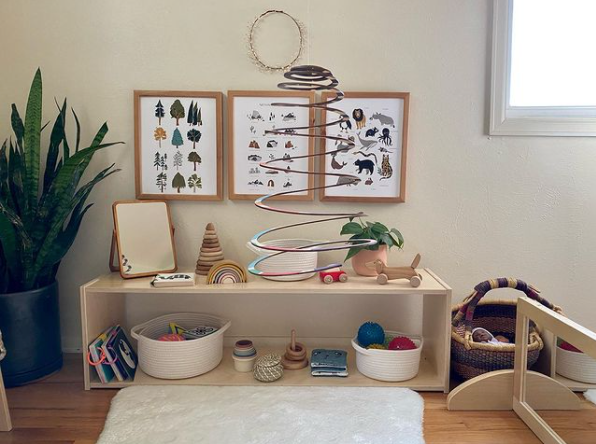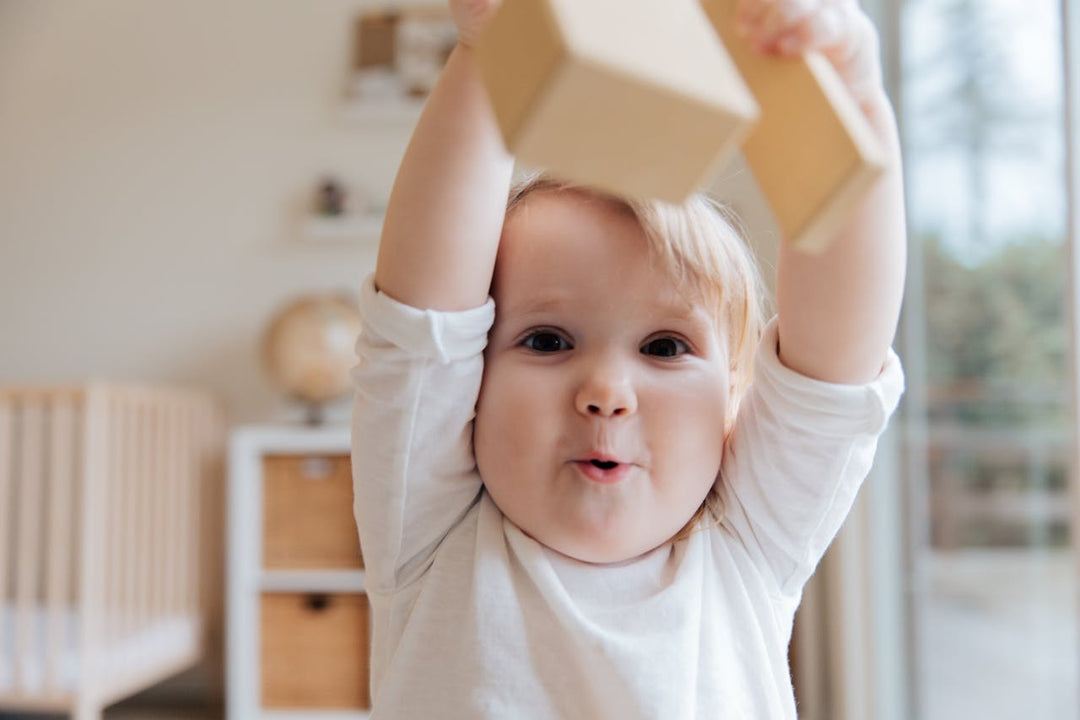The 4 Special Montessori Spaces That Will Help Your Baby

Montessori can be more than an educational system; it can be an approach to help promote your child's whole development as they grow. Montessori can provide you with a parenting paradigm that spans from infancy to adulthood.
Preparing for your child’s development early on can set your child up for the highest rate of success. You can plan and arrange your baby’s surroundings before they even arrive. Montessori consistently emphasizes the need to incorporate simplicity into the lives of tiny babies.
A Montessori-style setting identifies four distinct areas within a baby's environment where they will thrive and live for the next few months and even years.
These four areas are the care space, meal space, play space, and sleeping space.
Care Space
Babies interact with you from the moment they are born. Montessori emphasizes planning ahead of time for bathing, changing, and caring for your infant.
Despite the bad reputation, changing a baby’s diaper is actually a perfect time for interacting with your infant. Talking to your infant while changing their diaper and narrating the process provides your child language skills and body autonomy from an early age. It is a very intimate moment that can bolster the connection between you and your baby.
Also, clothing your baby in a way that they may move freely is best. Comfortable garments made out of natural fabrics are most advisable. The Montessori method recommends cotton diapers because they allow infants to feel wet, which will later aid with toilet training.
The infant’s care space can include a small dresser or closet where clothes hang at their height to promote independent dressing as the infant grows. Further, a cozy place for diaper changing with necessary items such as diapers, clothes, wipes, etc. located near the changing area will assist you in focusing on your child instead of moving around the room during diapering time.
Meal Space
Breastfeeding and bottle-feeding in a calm environment is best for you and your child. A peaceful environment has no background noise, allowing the mother and her child to concentrate on the activity. The Montessori method encourages mothers to not engage in any overly distracting act during this time but instead devote your attention to the infant. Of course this is easier said than done in today’s fast paced culture or while older siblings are present.
Don’t get too caught up in making each feeding perfect. Feel free to focus on using feeding time as a time and place for connection with your infant. Try to use the time to relax as well. Sitting down and feeding your infant is a perfect time for you to allow yourself off the hook for any other activity or chore. Connecting with your little person during this time will not only be beneficial for your infant, but also powerful for you.
When the infant begins to learn to sit up and is ready to transition to solid foods, you can create a meal space just for your child. This space can include a Montessori-inspired table and chair created explicitly for little ones. You can tuck the chair beneath the table, keeping the baby safe and secure and preventing them from falling out, but also giving them freedom to move and explore a new way of eating. This independence gives the child confidence and can send the child a message that you value them as individuals.
Play Space
Creating a play or work space specifically for your infant can be an exciting experience. The home is typically not inherently baby friendly, so creating a space just for your child where they can move freely and be themselves is best for your peace of mind and their development.
The Montessori method of child development is founded on the premise that newborns need a stimulating environment from birth. However, at the start of a baby's existence, stimulating does not imply loud and colorful. Instead opt for serene, quiet, and neutrally colored items, such as the Montessori topponcino.
The baby’s play space should have items meant for a small infant, at their height and at their skill level. Early on this may include simple items such as a mirror, hanging mobiles, and black and white contrast pictures for them to gaze at. As your infant develops, their items and decorations can become more intricate such as pastel colored animal pictures on the wall, a pull up bar, and rolling toys. The items you include in your child’s play space can vary significantly. The Montessori approach asks that each item have a purpose for the child’s development. Specific toy ideas can be found here.
Sleeping Space
As we all know, babies sleep a lot! Since a large majority of an infant’s time is spent sleeping, their sleeping space is just as important as the other spaces. The early Montessori method suggests that newborns sleep on a mattress on the floor to provide them with enough room to roam and be independent. This independence creates confidence in your child and helps them develop a good relationship with sleep.
Quick Read: "Simple Tricks to Help Your Baby Sleep Better and Longer" ->
An infant’s sleep area should include neutral colors so as to not excite the child or stimulate their learning brains. The sleep area should include very little items that would distract the child and instead promote the sole purpose of rest, relaxation, and sleep. You can include a small book corner or a few soft items. But the sleep space should be child safe, allowing them full access to the room or area on their own.
Conclusion
Over the years, the Montessori approach has sparked the interest of many parents, but a lot of them are still unsure of what to do or where to begin. It can all start with a shift in perspective. The first step is to trust that children, especially infants, have more potential than you think. As soon as you recognize this, you can begin to make adjustments in your household to better prepare yourself and your child for success in Montessori education.
Setting up a child’s space with this trust in mind can help you develop an environment beginning at infancy that is meant for your child instead of an afterthought of your home.
Looking for more Montessori information? Check out the rest of our Guides & Articles ->












